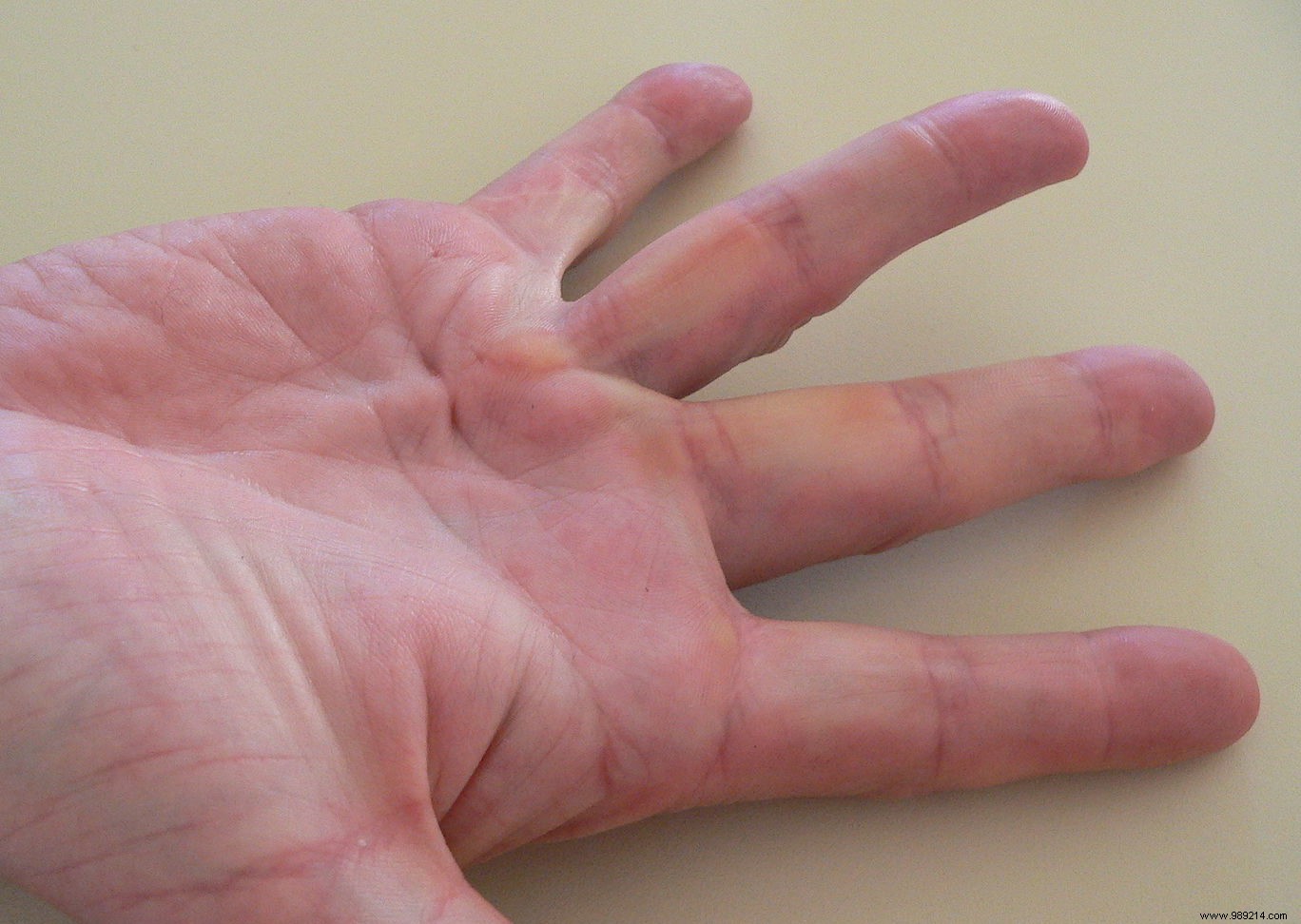Known for almost two centuries, Dupuytren's disease particularly affects men of a certain age. This disease with a strong genetic predisposition mainly affects Europeans and more particularly Icelanders. Thus, it is generally nicknamed "Viking disease".
In 1831, Baron Guillaume Dupuytren (1777-1835), surgeon at the Hôtel-Dieu in Paris, described a disease characterized by retractile fibrosis of the 'palmar aponeurosis , i.e. the membrane between the flexor tendons and the skin. This then leads to the appearance of fibrous nodules as well as a deformation of the fingers. Dupuytren's disease progresses rather slowly, so that the retraction of the palmar tissue occurs gradually. This leads to a loss of extension in the fingers , these tending to fix themselves in a hook, accompanied by an impossibility to open the hand. On a daily basis, this disease can be particularly disabling.
You should know that Dupuytren's disease affects between 3 to 5% of the European population . Men over 45 represent a large proportion of patients (between 70 and 80%). Moreover, this disease is nicknamed "Viking disease", because it mainly affects Icelanders, namely more than 30% of men aged 70.

This disease causes proliferation of fibroblasts and myofibroblasts, which causes collagen accumulation . This is a malfunction whose source is not the subject of any satisfactory explanation. However, immune causes are suspected, in particular the production of inflammatory cells by T lymphocytes. Nevertheless, Dupuytren's disease would be essentially linked to genetics.
Other factors, however, would favor its appearance, such as alcohol consumption, manual work or epilepsy. Nevertheless, these factors have been subject to correlations without proof of causality . The only certainty is that diabetes does indeed have an influence on the onset of the disease.
Various treatments have been tested (taking vitamin E, anti-inflammatories or exposure to ultrasound), but have had little effect on the course of the disease . Nevertheless, some mild forms of the disease can be alleviated thanks to micropuncture, in order to break the bands or even the injection of collagenase in order to split them.
Nevertheless, more severe forms causing too much discomfort require surgical intervention . There is on the one hand the aponeurotomy which allows the section of a flange and on the other hand the aponeurectomy which consists of the ablation of the excess fibrous tissue. However, aponeurectomy is an operation that is not often performed insofar as the risk of complications and the appearance of scars is significant. In addition, the risk of recurrence is 50%, naturally relegating this solution to the background.